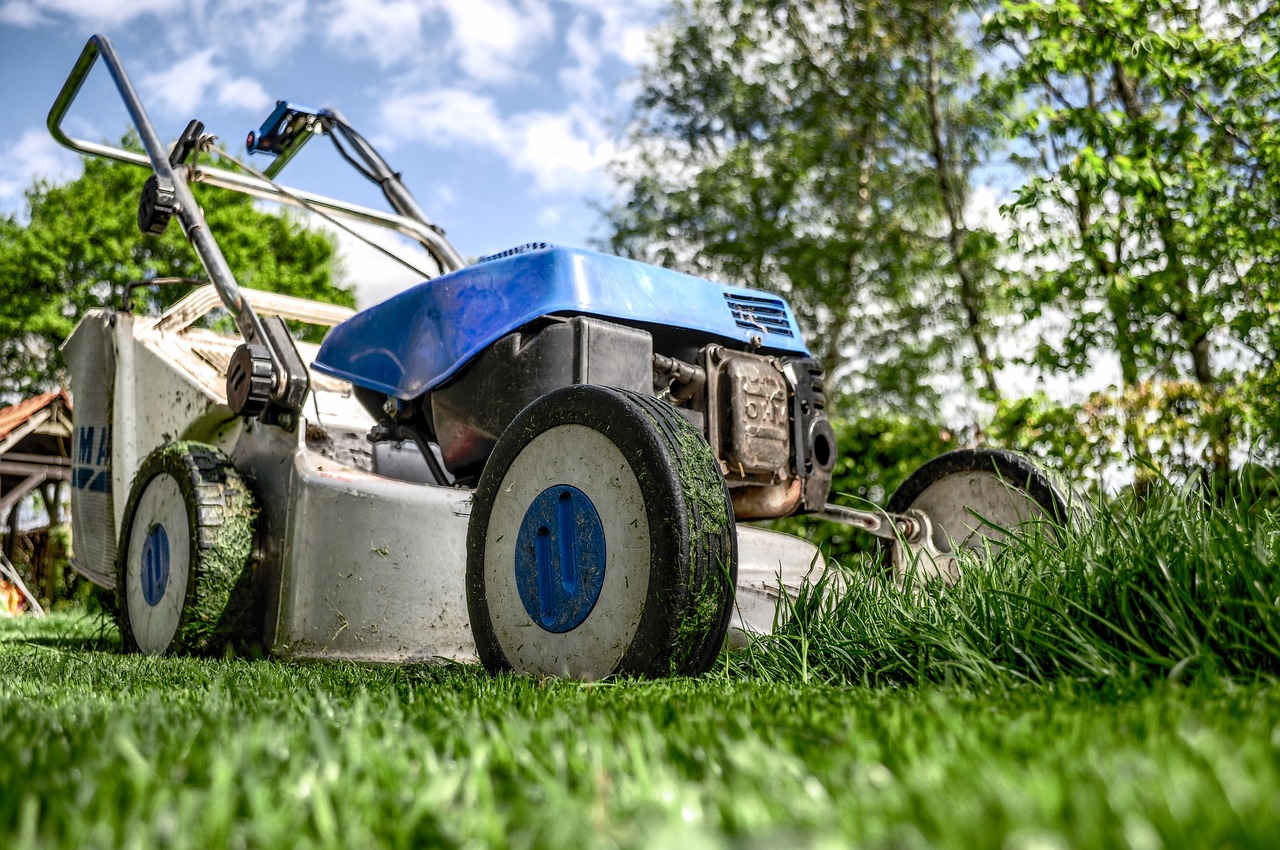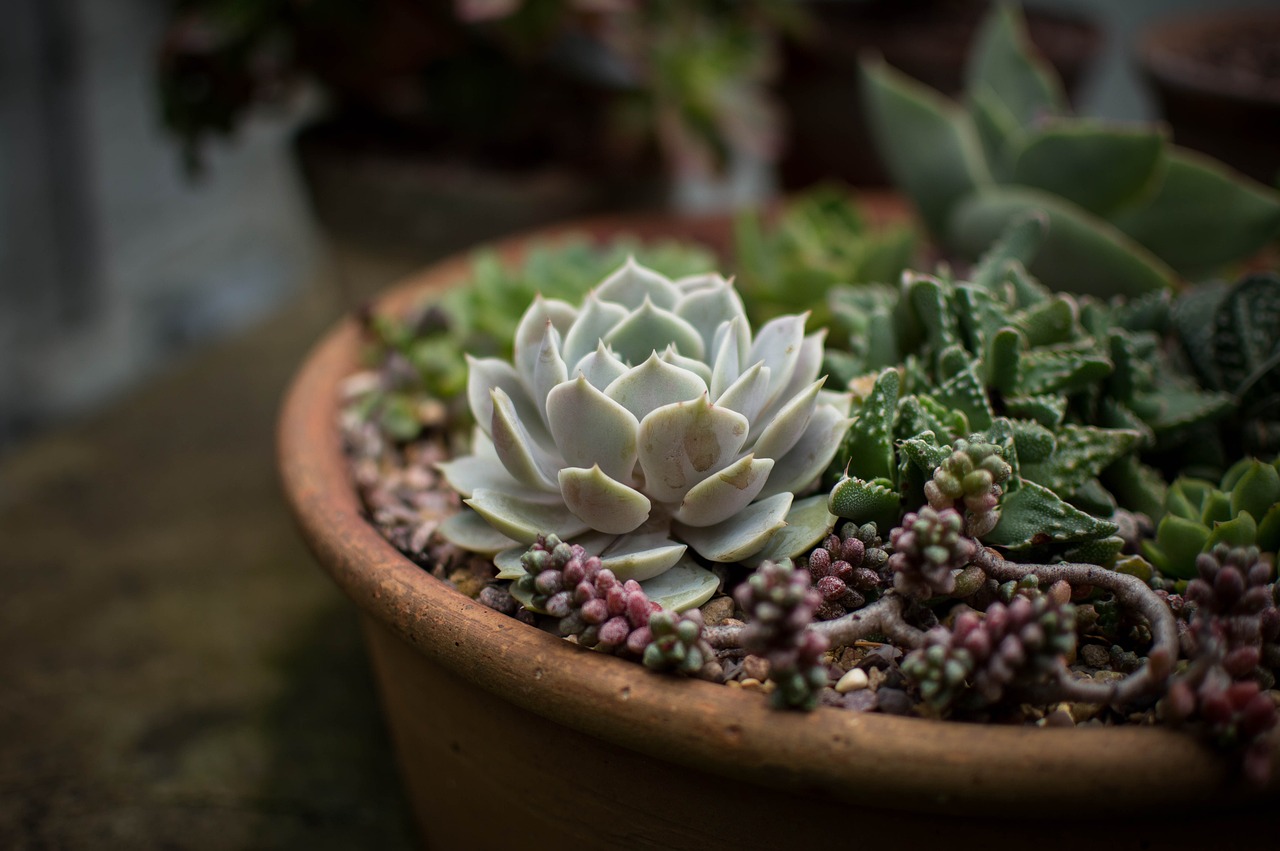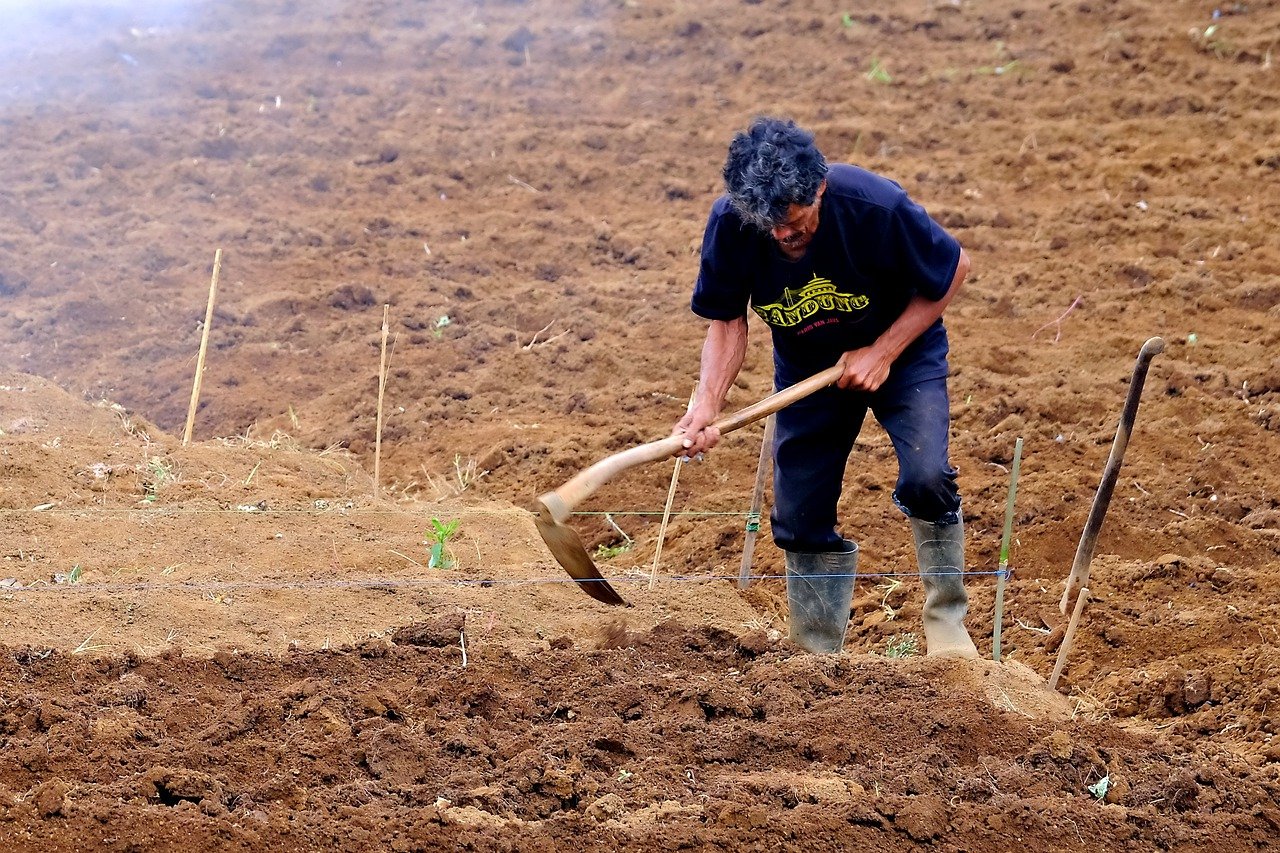The Concept and Benefits of No-dig Gardens
No-dig gardening is not just a trend; it’s a revolutionary approach that redefines how we think about cultivating plants. Imagine a garden where the soil remains undisturbed, allowing nature to work its magic without the constant interference of traditional tilling methods. This technique is all about respecting the natural ecosystem and promoting a healthy environment for plants to thrive. By embracing a no-dig philosophy, gardeners can foster a vibrant ecosystem that encourages biodiversity, improves soil health, and simplifies the gardening process. This article will delve into the principles of no-dig gardening, its myriad benefits, and practical tips to help both novice and seasoned gardeners embark on this sustainable journey.
The roots of no-dig gardening can be traced back to various traditional practices around the world, where the emphasis has always been on maintaining the integrity of the soil. The foundational principle is simple: by avoiding the disruption of soil layers, we allow the natural processes of decomposition and nutrient cycling to flourish. This approach not only conserves soil structure but also enhances its fertility over time. Think of it as nurturing a fine wine; the longer it sits undisturbed, the better it becomes. With no-dig gardening, you’re essentially giving your soil the time and space it needs to develop its rich, complex flavors, which in this case translates to healthier plants and bountiful harvests.
One of the most appealing aspects of no-dig gardening is its accessibility. Whether you’re a seasoned gardener or just starting out, this method can be adapted to suit your needs. It eliminates the back-breaking labor associated with tilling and allows you to focus on planting and nurturing your garden. Plus, it’s a fantastic way to engage with nature and experience the joy of watching your garden flourish without the stress of constant maintenance. So, if you’re looking for a more sustainable and enjoyable way to garden, no-dig gardening might just be the perfect solution for you.
- What is no-dig gardening? No-dig gardening is a method that promotes soil health by avoiding traditional tilling, allowing natural processes to enhance soil fertility.
- How does no-dig gardening benefit the environment? It improves soil health, promotes biodiversity, and reduces carbon emissions, contributing to a healthier ecosystem.
- Is no-dig gardening suitable for all types of plants? Yes, no-dig gardening supports a diverse range of plants and is particularly effective for crop rotation and companion planting.
- What materials do I need to start a no-dig garden? Basic materials include organic mulch, compost, and cardboard or newspaper to suppress weeds.

Understanding No-dig Gardening
No-dig gardening is a revolutionary approach that flips traditional gardening practices on their head. Instead of turning over the soil and disrupting its natural structure, this method embraces the idea of leaving the soil undisturbed. The origins of no-dig gardening can be traced back to various ancient agricultural practices, but it gained significant popularity in the 20th century, thanks to pioneers like Charles Dowding in the UK. Dowding's advocacy for this method has inspired countless gardeners to reconsider their approach to soil management.
At the core of no-dig gardening is the principle of nurturing the soil ecosystem rather than fighting against it. By avoiding tillage, gardeners allow the soil to maintain its natural layers, which are crucial for healthy plant growth. Think of the soil as a living organism, where each layer serves a specific purpose, much like the different organs in our body. When you till the soil, it's akin to disrupting that organism's natural flow, leading to a cascade of negative effects.
One of the most appealing aspects of no-dig gardening is its emphasis on building healthy soil. In a no-dig garden, organic matter is added to the surface, where it decomposes and enriches the soil over time. This method not only improves soil fertility but also enhances its structure, allowing for better water retention and aeration. The result? A vibrant garden teeming with life!
Moreover, no-dig gardening encourages a diverse range of beneficial organisms to thrive. These include microbes, fungi, and even earthworms, all of which play integral roles in nutrient cycling and soil health. By fostering these organisms, gardeners can create a self-sustaining ecosystem that requires less intervention and fewer chemical inputs.
In summary, no-dig gardening is not just a trend; it's a sustainable practice rooted in respect for nature. It allows gardeners to work with the soil rather than against it, leading to healthier plants, reduced labor, and a more productive garden. Whether you're a seasoned gardener or just starting, embracing the no-dig philosophy can transform your gardening experience.

Environmental Benefits
No-dig gardening is not just a trend; it's a revolutionary approach that brings a plethora of . By choosing to garden without tilling, you're not only nurturing your plants but also playing a significant role in enhancing the overall health of our planet. This method fosters a thriving ecosystem right in your backyard, making it a win-win for both you and Mother Nature.
One of the most remarkable aspects of no-dig gardening is its ability to improve soil health. Traditional tilling can disrupt the delicate balance of microorganisms in the soil, but no-dig practices preserve this essential soil structure. Healthy soil acts like a sponge, absorbing and holding moisture, which not only benefits your plants but also reduces runoff and erosion. This means that rainwater stays where it is needed most—right in your garden—rather than washing away valuable topsoil.
Moreover, no-dig gardens are champions of biodiversity. By allowing the soil to remain undisturbed, you create a habitat for a variety of organisms, from beneficial fungi to insects that pollinate your plants. This diversity is crucial for a balanced ecosystem. For example, earthworms, which thrive in undisturbed soil, aerate the ground and help break down organic matter, enriching the soil with nutrients. The more diverse your garden, the more resilient it becomes to pests and diseases, as nature's balance takes care of itself.
In addition to improving soil health and biodiversity, no-dig gardening also plays a vital role in reducing carbon emissions. When soil is disturbed, it releases carbon dioxide into the atmosphere, contributing to climate change. By keeping the soil intact, no-dig methods help sequester carbon, making your garden a little carbon sink. This is particularly important in today's world, where every small effort counts in the fight against global warming.
Here’s a quick overview of the environmental benefits of no-dig gardening:
- Enhances soil health by preserving structure and nutrients.
- Promotes biodiversity by creating a habitat for various organisms.
- Reduces carbon emissions by keeping soil intact and sequestering carbon.
- Conserves water by improving soil moisture retention.
In conclusion, adopting no-dig gardening techniques not only leads to a healthier garden but also contributes positively to the environment. It's a sustainable choice that reflects a commitment to nurturing our planet. So, whether you’re a seasoned gardener or just starting out, embracing this method can make a significant difference. Let's dig less and grow more, for the sake of our gardens and our environment!
1. What is no-dig gardening?
No-dig gardening is a method that avoids traditional tilling to maintain soil health and structure, promoting a thriving ecosystem.
2. How does no-dig gardening improve soil health?
By avoiding tillage, no-dig gardening preserves the soil structure, nutrients, and beneficial microorganisms, leading to healthier soil.
3. Can no-dig gardening help with water conservation?
Yes, no-dig gardens retain moisture better, reducing the need for frequent watering and promoting healthier plant growth.
4. Is no-dig gardening suitable for all types of plants?
Absolutely! No-dig gardening supports a wide variety of plants and is especially beneficial for growing diverse crops.
5. How can I start a no-dig garden?
To start a no-dig garden, you’ll need materials like cardboard, compost, and mulch. Simply layer them on top of the soil, and you’re ready to plant!

Soil Health Improvement
No-dig gardening is not just a trendy way to grow plants; it’s a revolutionary approach that significantly improves soil health. By avoiding traditional tillage, you help maintain the soil's natural structure, which is crucial for the thriving ecosystem beneath our feet. Think of your soil as a living entity, bustling with activity. When you dig, you disturb this community, disrupting the delicate balance that exists among soil particles, organic matter, and microorganisms. In a no-dig garden, the soil remains undisturbed, allowing beneficial organisms to flourish, which ultimately leads to a more robust garden.
One of the key benefits of no-dig gardening is its ability to retain nutrients within the soil. When you till the soil, you expose it to air and sunlight, which can lead to nutrient depletion. In contrast, no-dig methods involve layering organic materials, such as compost and mulch, on top of the soil. This technique not only nourishes the soil but also protects it from erosion and nutrient loss. Over time, these layers break down, enriching the soil and creating a rich habitat for plants. It's like building a cozy blanket for your soil, keeping it warm, nourished, and protected.
Moreover, maintaining soil health through no-dig gardening promotes a thriving microbial ecosystem. Beneficial microbes, such as bacteria and fungi, are essential for breaking down organic matter, which in turn releases nutrients for plants. The absence of tillage encourages a diverse range of microorganisms to flourish, creating a more resilient garden. Research has shown that healthy soil teems with life, and the more diverse this life is, the better equipped your garden will be to fend off pests and diseases. Imagine your garden as a well-balanced orchestra, where each microbe plays its part in creating a harmonious environment for growth.
Another significant aspect of soil health improvement in no-dig gardens is the enhancement of earthworm populations. Earthworms are nature's tillers, and they play a vital role in aerating the soil and facilitating nutrient cycling. When you avoid digging, you create a welcoming habitat for these beneficial creatures. Their burrowing actions help improve soil structure, allowing for better water infiltration and root penetration. A garden rich in earthworms is like a well-oiled machine, where everything works together seamlessly to support plant growth. As earthworm populations thrive, so does the overall health of your garden, leading to lush, vibrant plants.
In summary, no-dig gardening offers a multitude of advantages for soil health. By preserving soil structure, enhancing microbial activity, and promoting earthworm populations, this method creates an environment where plants can flourish. So, if you're looking to cultivate a garden that not only looks good but is also sustainable and healthy, consider embracing the no-dig approach. Your soil—and your plants—will thank you!
- What is no-dig gardening? No-dig gardening is a method that avoids traditional tilling, focusing instead on maintaining soil structure and health through layering organic materials.
- How does no-dig gardening improve soil health? By preventing soil disturbance, no-dig gardening helps maintain beneficial microbial communities and earthworm populations, leading to richer, more nutrient-dense soil.
- Can I start a no-dig garden in my backyard? Absolutely! Starting a no-dig garden is straightforward and can be done with minimal effort by layering organic materials like compost and mulch.
- What crops can I grow in a no-dig garden? No-dig gardens support a wide variety of plants, making them suitable for growing vegetables, herbs, and even flowers.

Microbial Activity
When it comes to gardening, the phrase “out of sight, out of mind” often doesn’t apply, especially when we talk about . In a no-dig garden, the health of the soil is paramount, and this is largely due to the bustling community of microbes that thrive beneath the surface. These tiny organisms, which include bacteria, fungi, and protozoa, are the unsung heroes of soil health. They play a vital role in breaking down organic matter, releasing nutrients, and creating a rich environment for plants to flourish.
Have you ever thought about how a healthy ecosystem operates? Just like a bustling city, the soil is alive with activity. Microbes work tirelessly, decomposing organic materials and transforming them into nutrients that plants can absorb. This process not only enhances soil fertility but also improves soil structure, allowing for better water retention and aeration. In a no-dig garden, where the soil is left undisturbed, these microbial communities can thrive without the disruption that traditional tilling often causes.
Moreover, the diversity of microbial life in no-dig gardens is crucial. A varied microbial population can lead to a more resilient garden. Different microbes perform different functions; for instance, some are excellent at nitrogen fixation, while others are adept at decomposing complex organic compounds. This diversity ensures that the soil can adapt to various environmental stresses, such as drought or disease outbreaks. It’s like having a diverse team at work—each member brings unique skills to the table, making the whole operation stronger.
Here’s a quick look at how microbial activity benefits your no-dig garden:
- Nutrient Cycling: Microbes break down organic matter, releasing essential nutrients like nitrogen, phosphorus, and potassium into the soil.
- Soil Structure Improvement: Fungal networks help bind soil particles together, enhancing aeration and water infiltration.
- Pest and Disease Resistance: A diverse microbial community can outcompete harmful pathogens, reducing the likelihood of plant diseases.
In summary, fostering microbial activity is a cornerstone of successful no-dig gardening. By allowing these beneficial organisms to thrive, gardeners can create a self-sustaining ecosystem that not only supports plant health but also contributes to a more sustainable gardening practice. So, next time you dig into your garden, remember that sometimes, the best approach is to let nature take its course beneath the surface.
- What is the main advantage of no-dig gardening? No-dig gardening primarily helps maintain soil health and structure, leading to better plant growth and reduced labor.
- How does no-dig gardening affect pests? By promoting microbial diversity, no-dig gardening can enhance natural pest control, reducing the need for chemical interventions.
- Can I start a no-dig garden in any type of soil? Yes, no-dig gardening can be implemented in various soil types, although it may require specific amendments to improve soil health.

Earthworm Populations
Earthworms are often referred to as the unsung heroes of the garden, and for good reason! These wriggly creatures play a pivotal role in maintaining soil health and fertility. In a no-dig garden, the absence of tilling allows earthworm populations to thrive, creating a vibrant underground ecosystem. But why are earthworms so important? Well, they contribute to soil aeration, nutrient cycling, and even help in water retention, making them indispensable to a flourishing garden.
When the soil is left undisturbed, earthworms can burrow freely, creating channels that allow air and water to penetrate deeper into the soil. This natural aeration is crucial for root development, as it ensures that plants receive the oxygen they need to grow. Furthermore, as earthworms consume organic matter, they break it down and transform it into nutrient-rich castings, which are often referred to as “nature’s fertilizer.” These castings are packed with essential nutrients that plants crave, enhancing their growth and resilience.
To illustrate the impact of earthworm populations in no-dig gardening, consider the following benefits:
- Soil Aeration: Earthworms create tunnels that improve soil structure and allow for better air and water flow.
- Nutrient Cycling: Their feeding habits help decompose organic matter, returning vital nutrients back to the soil.
- Water Retention: The channels created by earthworms facilitate moisture retention, reducing the need for frequent watering.
Interestingly, the presence of a healthy earthworm population can also be a sign of a thriving ecosystem. A diverse array of earthworm species can indicate that your soil is rich in organic matter and is functioning optimally. In contrast, a lack of earthworms may suggest that your soil is compacted or depleted of nutrients, which can hinder plant growth. Therefore, by adopting no-dig practices, you are not only fostering a healthy environment for your plants but also nurturing the earthworm populations that support them.
In conclusion, maintaining a thriving population of earthworms in your no-dig garden is a win-win situation. Not only do they enhance soil quality and promote healthy plant growth, but their presence also signifies a balanced and sustainable gardening ecosystem. So, next time you see an earthworm wriggling through your garden, take a moment to appreciate the vital role it plays in your gardening success!
Q: How do I attract more earthworms to my no-dig garden?
A: To attract more earthworms, focus on adding organic matter like compost or leaf mold to your garden. Earthworms love to feed on decomposing materials, so the more organic matter you provide, the more earthworms you'll likely see!
Q: Can I use chemical fertilizers in a no-dig garden?
A: It's best to avoid chemical fertilizers in a no-dig garden as they can harm beneficial organisms, including earthworms. Instead, opt for organic fertilizers that enhance soil health without disrupting the ecosystem.
Q: How can I tell if my garden has a healthy earthworm population?
A: A simple way to check is by digging a small hole in your garden. If you find several earthworms within a few inches of soil, it’s a good sign that your garden is healthy. Additionally, rich, dark soil often indicates a thriving earthworm community.

Water Conservation
One of the standout advantages of no-dig gardening is its remarkable ability to conserve water, making it an ideal choice for gardeners looking to be more sustainable. In traditional gardening methods, soil disturbance can lead to increased evaporation and runoff, which means that precious water is wasted. However, with no-dig techniques, the soil structure remains intact, allowing it to retain moisture more effectively. This is akin to wrapping a gift carefully; when you preserve its shape, the contents stay safe and sound. Similarly, by keeping the soil undisturbed, you ensure that moisture remains available for your plants.
Additionally, the use of organic matter, such as mulch, in no-dig gardens plays a crucial role in moisture retention. Mulch acts as a protective layer on the soil surface, reducing evaporation rates and keeping the soil cool. This not only saves water but also creates a more stable environment for plant roots to thrive. Imagine a cozy blanket on a chilly night; that’s what mulch does for your garden, keeping it snug and well-hydrated.
Moreover, the structure of no-dig gardens promotes better infiltration of water, allowing it to penetrate the soil more deeply and reach the roots where it’s needed most. This is particularly beneficial during dry spells when every drop counts. In fact, studies have shown that no-dig gardens can reduce water usage by up to 50% compared to traditional gardening methods. To illustrate this, let’s take a look at the following table:
| Gardening Method | Average Water Usage | Water Conservation (%) |
|---|---|---|
| Traditional Tilling | 100 liters | - |
| No-Dig Gardening | 50 liters | 50% |
This significant reduction in water usage not only benefits your garden but also contributes to broader environmental efforts, especially in areas prone to drought. By adopting no-dig gardening, you’re not just making your life easier; you’re also playing a part in conserving our planet’s vital resources. So, if you’re looking to make a positive impact while enjoying the fruits of your labor, consider the water-saving benefits of no-dig gardening.
In conclusion, the water conservation benefits of no-dig gardening are multifaceted. From improved soil structure to the strategic use of organic matter, this method not only ensures that your plants receive the moisture they need but also promotes a more sustainable approach to gardening. So, why not embrace this innovative technique and watch your garden flourish while saving water?
- What is no-dig gardening? No-dig gardening is a method that avoids traditional tilling, focusing instead on maintaining soil health and structure.
- How does no-dig gardening conserve water? It conserves water by maintaining soil structure, reducing evaporation, and using mulch to retain moisture.
- Is no-dig gardening suitable for all types of plants? Yes, no-dig gardening can support a wide variety of plants and is particularly beneficial for vegetables and flowers.
- Can I start a no-dig garden in my backyard? Absolutely! No-dig gardening is easy to implement and can be done in most backyard spaces.

Time and Labor Efficiency
One of the key advantages of no-dig gardening is its remarkable reduction in labor requirements. Imagine a garden where you spend less time on your knees, battling weeds and tilling soil, and more time enjoying the fruits of your labor. This method not only saves you time but also makes gardening accessible to everyone, from busy professionals to those who may have physical limitations. With no-dig gardening, you can reclaim your weekends and transform them into relaxing moments in your garden rather than exhausting chores.
By eliminating the need for traditional tilling, no-dig gardening allows you to focus on what truly matters—growing healthy plants. You might wonder how this is possible. Well, the secret lies in the layering technique used in no-dig gardens. Instead of turning the soil, you simply add organic materials like compost, mulch, and leaves on top of the existing soil. This not only enriches the soil but also suppresses weeds, reducing the need for constant maintenance.
Furthermore, the time saved on weeding is significant. In a traditional garden, weeding can feel like a never-ending battle. However, in a no-dig garden, the use of mulch and organic matter creates a barrier that minimizes weed growth. This means you can spend your gardening hours planting, harvesting, and enjoying your space rather than pulling out pesky weeds. Just think of it as a time-saving hack that gives you more freedom to explore your gardening creativity!
To illustrate the time efficiency of no-dig gardening, consider the following comparison:
| Task | Traditional Gardening | No-Dig Gardening |
|---|---|---|
| Soil Preparation | Extensive tilling and turning | Layering organic materials |
| Weeding Frequency | Weekly or bi-weekly | Monthly or less |
| Time Spent (per week) | 3-5 hours | 1-2 hours |
As you can see from the table above, the time spent on essential gardening tasks is significantly reduced in a no-dig garden. This efficiency not only enhances your gardening experience but also allows you to cultivate a thriving garden with less effort. You can finally enjoy the beauty of your garden without feeling overwhelmed by labor-intensive tasks.
In conclusion, embracing no-dig gardening is like finding a shortcut to a flourishing garden. You’ll save time, reduce labor, and still achieve the vibrant, productive garden of your dreams. So why not give it a try? Your future self will thank you for the extra hours spent enjoying your garden rather than working in it!
- What materials do I need to start a no-dig garden? You'll need organic materials such as compost, straw, leaves, and cardboard to create your layers.
- How often should I add new layers? It's generally recommended to add new layers at least once a year or as needed to maintain soil health.
- Can I grow vegetables in a no-dig garden? Absolutely! No-dig gardening is perfect for growing a wide variety of vegetables and herbs.
- Is no-dig gardening suitable for all soil types? Yes, no-dig gardening can benefit all soil types by improving structure and nutrient content.

Less Weeding
No-dig gardening is like a breath of fresh air for those who dread the back-breaking task of weeding. Imagine a garden where the weeds are less of a nuisance, allowing you to focus on nurturing your plants instead of battling the relentless encroachment of unwanted greenery. This is one of the standout benefits of adopting a no-dig approach. By utilizing techniques such as mulching and layering organic materials, no-dig gardens create a protective barrier that suppresses weed growth. This not only saves you time but also reduces the physical exertion typically associated with weeding.
So, how does this magic happen? When you establish a no-dig garden, you start by laying down a thick layer of organic mulch, which can be made from materials like straw, wood chips, or shredded leaves. This mulch serves multiple purposes: it retains soil moisture, adds nutrients as it breaks down, and, most importantly, blocks sunlight from reaching the weed seeds lying dormant in the soil. Without sunlight, those pesky weeds struggle to germinate and grow. It's like putting a blanket over your garden that keeps the weeds at bay while your plants thrive.
Additionally, the no-dig method encourages a rich ecosystem of beneficial microorganisms and earthworms, both of which contribute to a healthier soil structure. Healthy soil is less prone to weed invasions because it is more robust and resilient. As the organic matter decomposes, it enriches the soil, creating an environment where your plants can flourish without the constant competition from weeds. The relationship between soil health and weed suppression is a powerful one, making no-dig gardening an attractive option for both novice and seasoned gardeners alike.
To illustrate the effectiveness of no-dig gardening in reducing weeding, consider the following table:
| Traditional Gardening | No-Dig Gardening |
|---|---|
| Frequent weeding required | Significantly less weeding needed |
| Soil disturbance leads to weed seed germination | Soil remains undisturbed, reducing weed growth |
| Time-consuming | More time for planting and harvesting |
| Higher physical labor | Lower physical effort |
In conclusion, the no-dig gardening method not only simplifies the gardening process but also fosters a thriving environment for your plants. By minimizing the need for weeding, you can spend more time enjoying the beauty of your garden rather than toiling in it. So, if you're looking to reclaim your weekends and reduce the effort involved in maintaining your garden, consider embracing the no-dig philosophy. It’s a win-win situation where both your body and your plants will thank you!
- What is no-dig gardening? No-dig gardening is a method that focuses on maintaining soil health by avoiding traditional tilling, which can disrupt soil structure and ecosystems.
- How does no-dig gardening help with weed control? By using mulch and organic layers, no-dig gardening suppresses weed growth by blocking sunlight and preventing weed seeds from germinating.
- Can I start a no-dig garden in my backyard? Absolutely! No-dig gardening can be implemented in any space, whether it’s a large backyard or a small balcony.
- What materials can I use for mulching? Common mulching materials include straw, wood chips, grass clippings, and shredded leaves, all of which can enrich the soil as they decompose.

Easy Implementation
Starting a no-dig garden is as simple as pie, and honestly, it’s one of the most appealing aspects of this gardening method. You don’t need to be a seasoned gardener to dive into this approach; all you need is a little enthusiasm and a few basic materials. The first step is to choose a suitable location. Look for a spot that receives adequate sunlight and has good drainage. Once you’ve found your perfect patch, it’s time to lay the groundwork—literally!
Begin by laying down a layer of cardboard or newspaper directly on the grass or soil. This acts as a barrier to suppress weeds and will decompose over time, enriching the soil. Next, you’ll want to add a thick layer of organic matter on top, such as compost, straw, or well-rotted manure. This not only provides nutrients but also helps retain moisture.
One of the great things about no-dig gardening is that you can build your garden in layers. Think of it like making a lasagna! Each layer adds depth and nutrients to your soil. Here’s a quick rundown of the layers you might consider:
- Cardboard or newspaper layer for weed suppression
- Compost for nutrients
- Straw or wood chips for moisture retention
- Mulch to keep the soil temperature stable
After layering, you can start planting directly into the compost. There’s no need to dig or disturb the soil beneath; just create a small hole, place your seeds or seedlings in, and cover them lightly with more compost. This method not only minimizes labor but also allows your plants to establish themselves in a rich, nutrient-dense environment.
To maintain your no-dig garden, simply add more organic matter as needed, and keep an eye on moisture levels. Watering becomes less of a chore since the layers help retain moisture, making it easier for your plants to thrive. Plus, you’ll find that you spend less time weeding, as the cardboard layer does a fantastic job of keeping those pesky invaders at bay.
In summary, the implementation of a no-dig garden is straightforward and can be tailored to fit your specific needs. With minimal effort and a little creativity, you can create a lush, productive garden that benefits not only you but also the environment.
Q: Can I start a no-dig garden in a small space?
A: Absolutely! No-dig gardening is perfect for small spaces. You can create raised beds or use containers to implement this method effectively.
Q: How often should I add organic matter to my no-dig garden?
A: It's best to add organic matter at least once a year, especially in the spring. This helps replenish nutrients and maintain soil health.
Q: What types of plants grow well in a no-dig garden?
A: Almost any plant can thrive in a no-dig garden! Vegetables, herbs, and flowers all do well, especially when properly spaced and cared for.
Q: Is no-dig gardening suitable for all soil types?
A: Yes! No-dig gardening can improve soil structure over time, making it beneficial for all soil types, whether sandy, clay, or loamy.

Growing Diverse Crops
No-dig gardens are not just about convenience; they also open the door to a world of diversity in your gardening efforts. Imagine a lush tapestry of colors, flavors, and textures all thriving in your backyard without the back-breaking labor of traditional gardening methods. This technique allows you to cultivate a wide variety of plants, making it an ideal choice for both novice and experienced gardeners alike. So, what makes no-dig gardening particularly effective for growing diverse crops? Let's dive into the details!
One of the standout features of no-dig gardening is its ability to support crop rotation and companion planting. Crop rotation is the practice of growing different types of crops in the same area in sequential seasons. This not only helps in managing soil nutrients but also reduces the risk of pests and diseases. In a no-dig garden, you can easily implement crop rotation by layering organic materials, allowing the soil to maintain its structure and health without the disruption of tilling.
Companion planting takes this a step further by encouraging the growth of certain plants together to enhance their growth and deter pests. For example, planting marigolds alongside tomatoes can naturally repel nematodes and other harmful insects. In a no-dig garden, the diverse root systems and organic matter work together to create a balanced ecosystem, which can lead to healthier plants and improved yields. The synergy between plants can be truly magical, as they support each other in ways that you might not expect!
Additionally, no-dig gardening allows you to experiment with seasonal planting strategies. By taking advantage of the natural growing seasons, you can plan your garden to include a variety of crops throughout the year. This not only maximizes your harvest but also keeps your garden vibrant and alive with activity. For instance, you might plant cool-season crops like spinach and kale in early spring, followed by warm-season crops such as tomatoes and peppers in late spring. This staggered approach ensures that your garden is always producing something, keeping your kitchen stocked with fresh ingredients.
Moreover, the benefits of biodiversity extend beyond just the plants themselves. A diverse garden attracts a variety of beneficial insects and wildlife, which can help pollinate your flowers and control pest populations. This natural balance creates a self-sustaining environment where everything works in harmony. Think of your no-dig garden as a mini-ecosystem, where each plant and creature plays a vital role in maintaining the overall health of the garden.
In summary, no-dig gardens not only simplify the gardening process but also enhance your ability to grow diverse crops. By embracing crop rotation, companion planting, and seasonal strategies, you can create a flourishing garden that is productive, sustainable, and bursting with life. So why not give it a try? Your taste buds (and the environment) will thank you!
- What is no-dig gardening? No-dig gardening is a method that focuses on building healthy soil without traditional tilling, thereby preserving soil structure and promoting beneficial organisms.
- Can I grow vegetables in a no-dig garden? Absolutely! No-dig gardening is perfect for growing a wide range of vegetables, herbs, and even flowers.
- How do I start a no-dig garden? Begin by layering organic materials like cardboard, straw, and compost directly on the soil. Then, plant your seeds or seedlings into the layers.
- Is no-dig gardening suitable for all types of soil? Yes, no-dig gardening can be adapted to various soil types, helping to improve soil health over time.

Seasonal Planting Strategies
When it comes to gardening, timing is everything. are essential for maximizing your garden's potential and ensuring a bountiful harvest throughout the year. By understanding the unique growing requirements of different plants and aligning them with the seasons, you can create a thriving no-dig garden that flourishes with minimal effort. Imagine your garden as a well-orchestrated symphony, where each plant plays its part at just the right moment, contributing to a harmonious and productive ecosystem.
One of the first steps in developing effective seasonal planting strategies is to consider your local climate. Different regions have varying growing seasons, so it’s crucial to know when the last frost occurs in spring and the first frost in fall. This knowledge allows you to select the right crops for each season. For instance, cool-season crops like lettuce, spinach, and peas thrive in the cooler temperatures of early spring and fall, while warm-season crops such as tomatoes, peppers, and cucumbers prefer the warmth of summer.
Another vital aspect of seasonal planting is crop rotation. In a no-dig garden, where the soil structure is preserved, rotating your crops can significantly enhance soil health and reduce pest and disease issues. By planting different families of plants in succession, you can help prevent nutrient depletion and break the life cycles of pests. For example, after harvesting your summer tomatoes, consider planting a cover crop like clover or buckwheat in the fall, which will enrich the soil and prepare it for the next planting season.
Companion planting also plays a crucial role in seasonal strategies. This technique involves pairing plants that benefit each other when grown together, enhancing growth, deterring pests, and maximizing space. For instance, planting basil alongside tomatoes not only improves the flavor of the tomatoes but also repels harmful insects. In a no-dig garden, where plant roots can spread freely, these companions can thrive together, creating a vibrant and productive garden.
To help visualize your seasonal planting strategy, consider creating a simple planting calendar. This tool can serve as a guide for when to sow seeds, transplant seedlings, and harvest your crops. Here’s a basic example of what your planting calendar might look like:
| Month | Cool-Season Crops | Warm-Season Crops |
|---|---|---|
| March | Spinach, Peas | |
| April | Lettuce, Radishes | Tomatoes, Peppers (start indoors) |
| May | Transplant Tomatoes, Cucumbers | |
| June | Beans, Squash | |
| September | Fall Lettuce, Kale |
By following these seasonal planting strategies, you can ensure that your no-dig garden is not just a patch of soil but a dynamic ecosystem that changes and grows with the seasons. Each planting season brings new opportunities and challenges, but with a little planning and creativity, you can cultivate a garden that thrives and brings you joy all year round.
- What is no-dig gardening? No-dig gardening is a method that avoids traditional tilling, focusing instead on maintaining soil health and structure.
- How does seasonal planting benefit my garden? Seasonal planting ensures that crops are grown at the optimal time, leading to better yields and healthier plants.
- Can I grow both cool-season and warm-season crops in a no-dig garden? Yes! By planning your planting schedule, you can successfully grow both types of crops throughout the year.
- What are some common companion plants? Common companions include basil with tomatoes, marigolds with squash, and carrots with onions.

Companion Planting Benefits
Companion planting is like hosting a dinner party for your plants, where everyone gets along and benefits from each other's company. In the realm of no-dig gardening, this practice shines brightly, enhancing the overall health and productivity of your garden. By strategically pairing plants, you can create a harmonious ecosystem that not only maximizes space but also minimizes the need for chemical interventions. Imagine a garden where tomatoes and basil grow side by side; the basil not only enhances the flavor of the tomatoes but also helps deter pests. It's a win-win situation!
One of the most significant benefits of companion planting is its ability to naturally control pests. Certain plants emit scents or chemicals that repel unwanted insects, acting as a protective barrier for their neighbors. For instance, marigolds are renowned for their pest-repelling qualities. When planted alongside vegetables, they can help keep aphids and nematodes at bay. This natural approach not only reduces the need for pesticides but also fosters a healthier garden environment.
Moreover, companion planting can enhance nutrient absorption. Some plants have different root structures and nutrient needs, allowing them to complement each other. For example, legumes like beans fix nitrogen in the soil, enriching it for heavy feeders like corn. This symbiotic relationship ensures that both plants thrive without the need for synthetic fertilizers, making your garden more sustainable and eco-friendly.
Additionally, companion planting can improve pollination rates. Flowers like borage and nasturtiums attract beneficial insects such as bees and butterflies, which are essential for pollinating many crops. When you create a diverse garden with a variety of flowering plants, you increase the chances of having these helpful visitors, leading to better yields. It's like throwing a garden party where the pollinators are the guests of honor!
To illustrate the benefits of companion planting further, here’s a simple table showcasing some popular plant pairs and their advantages:
| Plant Pair | Benefits |
|---|---|
| Tomatoes & Basil | Enhances flavor and repels pests. |
| Carrots & Onions | Onions deter carrot flies while carrots help aerate the soil. |
| Corn & Beans | Beans fix nitrogen, benefiting corn; corn provides support for beans. |
| Marigolds & Vegetables | Repels various pests, enhancing overall plant health. |
In conclusion, companion planting is not just a gardening technique; it's a philosophy that embraces the interconnectedness of nature. By fostering relationships between different plant species, you can create a thriving no-dig garden that is not only productive but also resilient. So, the next time you plan your garden layout, think about inviting a few companions to the party—your plants will thank you!
- What is companion planting? Companion planting is the practice of growing different plants in close proximity for mutual benefits, such as pest control and improved growth.
- How does companion planting work? Certain plants can enhance each other's growth, repel pests, or attract beneficial insects, creating a healthier garden ecosystem.
- Can I use companion planting in a no-dig garden? Absolutely! Companion planting complements the no-dig gardening method by promoting biodiversity and soil health.
- Are there any plants I should avoid pairing together? Yes, some plants can have negative interactions. For example, planting peas and onions together can stunt their growth.
Frequently Asked Questions
- What is no-dig gardening?
No-dig gardening is a sustainable gardening method that focuses on maintaining soil health by avoiding traditional tilling. Instead of turning the soil, this technique promotes layering organic materials on top, allowing natural processes to improve soil structure and fertility.
- What are the main benefits of no-dig gardening?
No-dig gardening offers several advantages, including improved soil health, enhanced water retention, reduced labor, and decreased weed growth. By fostering a thriving ecosystem within the soil, it supports plant growth while being environmentally friendly.
- How does no-dig gardening improve soil health?
By avoiding tillage, no-dig gardening helps maintain the soil's natural structure, preserving vital nutrients and microbial life. This method encourages a diverse range of beneficial organisms, such as earthworms and microbes, which contribute to nutrient cycling and overall soil vitality.
- Can no-dig gardening help with water conservation?
Absolutely! No-dig gardens are designed to retain moisture more effectively than traditional gardens. The organic layers used in no-dig gardening help to create a sponge-like effect, which allows the soil to hold water, reducing the need for frequent irrigation.
- Is no-dig gardening suitable for all types of plants?
Yes, no-dig gardening can support a wide variety of plants. This method is particularly beneficial for growing diverse crops, as it allows for effective crop rotation and companion planting, maximizing the use of space and resources in your garden.
- How do I get started with no-dig gardening?
Starting a no-dig garden is quite simple! Begin by choosing a suitable location, then layer organic materials such as straw, compost, and mulch directly onto the soil. Over time, these layers will break down, enriching the soil without the need for digging.
- Will I still have to deal with weeds in a no-dig garden?
While no garden is entirely weed-free, no-dig gardening significantly reduces weed growth. The layers of mulch and organic matter act as a barrier, limiting sunlight and making it harder for weeds to establish themselves. Regular maintenance will keep them at bay!
- Are there any downsides to no-dig gardening?
While no-dig gardening has numerous benefits, it may require an initial investment in materials like compost and mulch. Additionally, it can take some time for the soil to fully improve, so patience is key. However, the long-term benefits often outweigh these initial challenges.



















